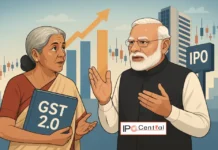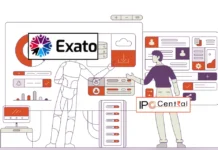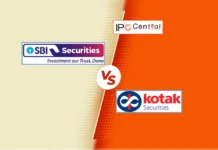
In trading financial markets, there exist two basic operations: buying and selling. Going long and going short, respectively, are simply the names we give to these operations. As a trader involved in stocks trading, commodities, or even carrying out online foreign exchange trading in India, there is a clear need to familiarize yourself with the differences in long and short trades in order to make logical trading decisions.
This article goes in-depth into the mechanics, strategies, and risks of long and short trading. So, if you are a novice learning to trade forex in India or just seeking to improve your strategy, this guide will be of great use.
1. The Basics of Long and Short Trades
What Does It Mean to Go Long?
Going long means purchasing an asset expecting its price to increase. It is the most classic type of trading where you buy an asset at a lower price and sell it in the future at a higher price to make a profit.
For instance, suppose you purchase the shares of a firm at ₹1,000 per share and then sell them subsequently at ₹1,200. In that case, you earn a profit of ₹200 per share. This method is applicable for all markets: stocks, commodities, and forex.
What Does It Mean to Go Short?
Shorting, or going short, is a strategy employed when the trader anticipates the price of an asset to fall. As opposed to going long, in which you purchase first and sell subsequently, short selling entails borrowing an asset, selling it at the prevailing market price, and then later repurchasing it at a lower price to be returned to the lender.
For example, if you short a share at ₹1,000 and the price falls to ₹800, you can cover it at ₹800, return it to the lender, and keep the ₹200 profit per share.
In forex trading, short selling is prevalent as currencies are traded in pairs. Selling one currency involves buying another currency at the same time.
2. Long and Short Positions in Forex Trading
Forex trading works differently than usual stock trading in that every transaction is a currency pair. You are always short on one currency and long on another when you trade forex.
Example of a Long Forex Trade
Assume you want to trade the EUR/USD pair and expect the euro to appreciate against the U.S. dollar. You would initiate a buy order of EUR/USD at 1.1000. If the price goes up to 1.1200, you can sell the position for a gain.
Example of a Short Forex Trade
If you predict that the euro would weaken relative to the U.S. dollar, you would execute a sell against EUR/USD at 1.1000. When it goes down to 1.0800, you can close out at a cheaper price and enjoy the premium.
Forex flexibility renders this market the most volatile and dynamic among others and very fascinating even for the one new to learning how to trade forex India business.
3. Benefits and Drawbacks of Long and Short Trading
Benefits of Going Long
- Endless Profit Potential: In theory, there is no limit to how high an asset’s price can go.
- Less Risk Than Shorting: Losses are restricted to the amount of money invested.
- Suitable for Bull Markets: Best in markets with a general upward trend.
Drawbacks of Going Long
- Market Declines: When the price goes down, traders can lose money.
- Capital Lock-In: Capital is locked up until the sale of the asset.
Benefits of Going Short
- Profit in Declining Markets: Short selling enables traders to take advantage of falling prices.
- Hedging Against Losses: Shorting can be utilized as a hedge to cover long positions.
Hazards of Going Short
- Unlimited Loss Potential: In the event of prices going up rather than down, losses can be theoretically unlimited.
- Margin Requirements: Short selling tends to involve margin trading, which heightens risk.
- Regulatory Restrictions: There are restrictions on short selling in some markets to avoid excessive volatility.
For online forex trading in India by traders, it’s important to know how to manage risk to avoid possible losses.
4. Going Long vs. Short Trade
To go long or short is determined by several issues, such as market conditions, risk tolerance, and trading strategy.
When to Go Long
- When the overall trend is bullish.
- When there is supportive news or economic data that supports price appreciation.
- When technical indicators agree on an upward trend.
When to Go Short
- When the overall trend is bearish.
- When there is adverse news or economic data indicating price depreciation.
- When technical indicators reflect a clear downtrend.
For technical and fundamental analysis in forex trading, whether to go long or short is determined.
5. Basic Tools for Long and Short Trading
Traders use multiple tools and strategies to assist them in making their decision for both long and short trades.
Technical Analysis Tools
- Moving Averages: Determine the direction of a trend.
- Relative Strength Index (RSI): Assist in determining when a market is overbought or oversold.
- Support and Resistance Levels: Identify possible entry and exit points.
Fundamental Analysis Tools
- Interest Rate Announcements: Influence currency value in forex trading.
- Economic Reports: GDP, employment reports, and inflation rates influence market direction.
- News Events: Political occurrences, policy announcements, and worldwide economic changes affect asset prices.
A combination of both technical and fundamental analysis is essential for online forex trading success in India.
6. How to Trade Forex in India: Regulations and Platforms
If you’re interested in learning how to trade forex in India, it’s essential to understand the regulatory landscape.
Forex Trading Regulations in India
- Forex trading in India is regulated by the Reserve Bank of India (RBI) and the Securities and Exchange Board of India (SEBI).
- Indian merchants are permitted to deal in currency pairs that include INR (USD/INR, EUR/INR, GBP/INR, and JPY/INR).
- Brokers that meet Indian regulations are the only ones who can trade international currency pairs.
7. Conclusion: Mastering Long and Short Trades
Comprehending the terms long and short trades is essential to becoming a successful trader. Whether you like to go long in a bull market or short assets in a bearish trend, success depends on research, strategy, and risk management.
For individuals interested in online forex trading in India, remaining informed about regulations and employing the proper trading techniques will improve your chances of succeeding in the forex market.
Mastering long and short trades allows you to make well-informed decisions, take advantage of market movement, and create a solid basis for profitable trading.






































